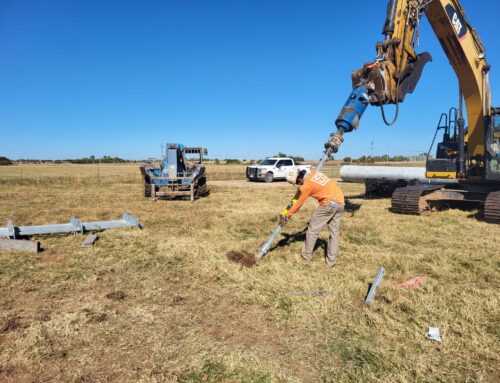
The West Fort McMurray (WFMAC) 500 kV Transmission Line Project includes over 310 miles of high voltage transmission line, expansion of the existing Livock substation, and construction of the new Thickwood Hills substation, all located in Northcentral Alberta. The project is expected to be in-service by mid-2019.
Team Members
Alberta Powerline
Valard
Crux Subsurface
Crux’s Role
Geotechnical Profiling and Foundation Design
Crux conducted a desktop study of two proposed alignments. This included collection and review of available project and public information along the alignments; geo-referencing of over 50 geologic maps; and reports on the surface and subsurface geology, hydrogeology, and geomorphology. 18 expected soil profiles were developed, and primary and secondary foundation types were selected for approximately 2,600 structures between the two alignments. Bid level designs for multiple soil profiles and foundation types were subsequently developed for pricing.
Following route selection, a limited geotechnical investigation was completed. Results from this and the indicative pricing were used to refine soil profiles to 17. IFC foundation design packages were developed through 30%, 60% and 90% stages with Owner and contractor reviews. Final designs included drilled shafts, driven piles, helical piles & anchors, and grouted anchors.
Geotechnical Investigation
Crux managed a comprehensive geotechnical investigation program, completing borings at each of the 1,392 structure locations. Between two and five geotechnical drills operated simultaneously to remain ahead of construction, averaging around two borings per day per rig. Specific challenges included drilling in extreme cold, in environmentally sensitive areas, and during ice breakup. The resulting data was used to select the optimal foundation type for each structure.
Construction
Helical pile anchors were the primary foundation type, supporting 1,182 guyed structures. Crux was responsible for onsite geotechnical confirmation, quality assurance and compliance reporting. 13 work fronts operated simultaneously at times, with up to 7 driven pile, 6 helical pile, 1 drilled shaft, 1 pre-drill, and 1 anchor testing crew running concurrently.
The revised 17 soil profiles proved highly accurate, with approximately just 2% of structure locations encountering unexpected geotechnical materials. Crux developed an additional 4 general soil profiles to mitigate this, as well as a handful of site-specific foundation designs.







